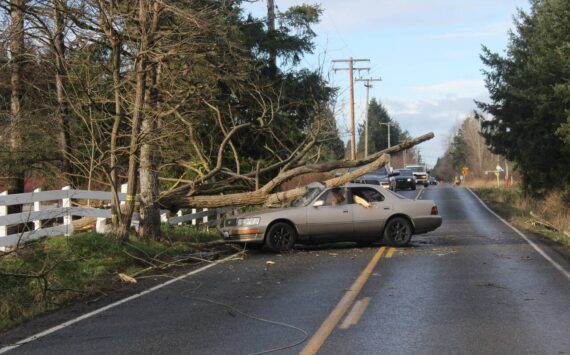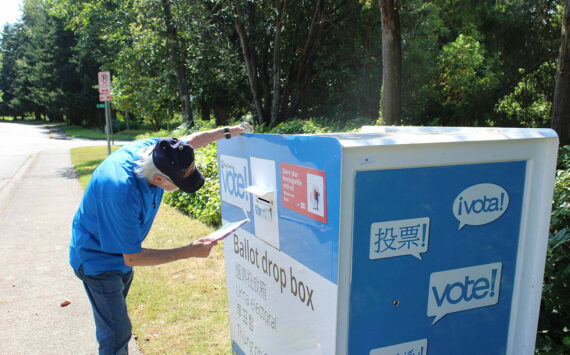“Changes coming to the Olympia Airport may result in either a shift – not extension – of the runway 700-feet to the south, or the elimination of commercial traffic at the airport.A series of public information meetings on a planned runway threshold relocation at Olympia Airport are being held to acquaint area residents and businesses with the project.The relocation is necessitated by federal airport safety standards. The next public meeting will be held by the Port of Olympia on June 5 in Tumwater. The meeting will be held at 6 p.m. in the State Labor and Industries building, near the airport.The Port, which owns and operates the airport in Tumwater, is hosting the meetings to explain how the Port intends to comply with Federal Aviation Administration requirements for separation of a major arterial from aircraft landings and takeoffs.In order to meet FAA requirements that the north end of the airport’s 5,000-foot runway be located farther from Highway 99, the Port plans to close down as much as a 700-foot portion of the north end of the runway and shift that length to the south.This is something we need to do in order to have continued corporate aviation service and to attract commercial aviation service, said Steve Pottle, Port Commissioner. The airport is a valuable resource to our community, Pottle said. We have almost 80,000 takeoffs and landings per year. Even without scheduled airliner service, we have 18,000 corporate travelers a year going into and out of our airport.A study conducted for the Port shows Olympia Airport has 20 regular corporate aviation users, including companies, government agencies and other parties that have facilities or conduct business in Thurston County. These customers avoid using SeaTac International Airport because of freeway and airport area congestion, high parking and other costs associated with using that airport.Olympia Airport’s 5,000 feet of runway length is the absolute minimum for many of the corporate aviation aircraft that land and takeoff at the airport, said Doug Sandau, the Port’s Airport Manager. Whatever is removed at one end of the runway must be added at the opposite end.We’re not extending the runway., said Wendy Holden, the Port’s deputy director. We’re just preserving what we have.Holden said nearly 100 airports in the western United States face the same dilemma. She said all are being required by the FAA to relocate their runway threshold.In Washington, Boeing and Paine fields, as well as airports elsewhere are in the process of complying with the FAA runway threshold requirements, Sandau said.The threshold is a painted line on the approach end of a runway that establishes the first allowable point of physical contact an aircraft can make when landing and also determine a runway’s allowable distance for aircraft take off.The location of a runway threshold varies from airport to airport depending on the type of obstructions encountered such as highways and buildings. The FAA refers to that area as the Object Free Zone or OFZ. Initial estimates for the Olympia Airport project is $2.5 million, with 90 percent of the amount funded by the FAA, Sandau said. Because it will take some time to resolve road closure and relocation issues, construction may not begin until 2002, he said.Several alternatives will be presented for consideration, including the proposed 700-foot relocation, a 300-foot relocation, and an option of doing nothing.Initially, relocating Highway 99 farther north was considered. However, this scenario would require a major commitment of funds, far exceeding estimates for shifting the runway south, and would have negative environmental impacts, Sandau said.As a result, the Port and its runway relocation consultant, Reid Middleton, of Everett and the airport planning firm of Barnard Dunkelberg, of Tulsa, Oklahoma, have focused on how to minimize the impact of adding onto the south end of the runway.The alternatives to be presented at the June 5 meeting, Sandau said, involve no relocation of homes but would require consolidation and modification of several county roads which impact the Object Free Zone at the south end of the airport.One scenario would be to construct an alternate access to 88th Avenue and 93rd. In doing so, portions of 88th Avenue, Case Street, and Tilley Road, which would penetrate the OFZ once the runway shift was completed, would be closed. The Port is assessing what impact the shift would have on the surrounding neighborhood, including Scheller Park and residences along 88th, 83rd Avenue and Armstrong Street.The do nothing alternative would bring the total runway length under FAA requirements, Sandau said, and FAA certification would be lost. This would close the airport to commercial traffic, as well as eliminate the future potential for regional passenger service, he said.Rumors circulating that the airport is expanding are completely false, Sandau said.Even if the political will was there and the public was screaming for it, it wouldn’t be likely to happen, Sandau said. He added that the runway would have to undergo a complete rebuild to handle larger aircraft – a prohibitively expensive scenario highly unlikely to take place in the foreseeable future.The only way we could handle a (Boeing) 737 right now was if it came in and left empty, Sandau said.The Port has been working with Thurston County and the City of Tumwater and, to some extent, with the State Department of Transportation on road access and related issues. Sandau said the Port would continue to work with these entities in addressing issues related to the planned runway threshold relocation.We can’t afford to lose another foot, Sandau said.”
Port of Olympia Seeks to Relocate Airport Runway South or Possibly Lose FAA Commercial Certification
Tags: Airport Manager, Barnard Dunkelberg, Boeing, deputy director, director 's deputy, Doug Sandau, Federal Aviation Administration, Industries building, Oklahoma, Olympia Airport, Port Commissioner, Port of Olympia, Port of Olympia Seeks, Reid Middleton, runway relocation consultant, SeaTac International Airport, State Department of Transportation, Steve Pottle, The Port, Thurston County, Tulsa, Tumwater, United States, USD, Washington, Wendy Holden




